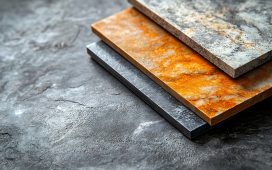We all like being couch potatoes, but sitting on a filthy sofa is never enjoyable. Crumbs, spilled drinks, pet hair, filth, and oil from your hands and feet all gather on your couch, giving it a dingy appearance. But don’t be concerned. In this article, we’ll show you how to clean a couch so that you may binge-watch your favorite TV program. Sometimes In most circumstances, we are hurt or struck by anything that produces blood flow, leaving a stain on our clothing, carpets, or furniture that is worse than any other stain. Stains are stubborn and tough to get rid of. These stains must be cleaned as soon as possible or they may leave a lasting discoloration.
Before attempting to clean the upholstery, I’d like to educate you on the many varieties of upholstery fabric and their qualities, since each type of fabric requires a different type of cleaning technique.
- Olefin fabric: If your upholstery is made of olefin fabric, you won’t have to worry about sabotaging your great-looking furniture because it’s easy to clean, resilient, and colorfast.
- Nylon is simple to clean, durable, and abrasion-resistant, which means it can tolerate wear.
- Wool is difficult to clean and is not stain-resistant.
- Leather: Since the stain hasn’t yet dried, you may quickly wash it away with a damp cloth.
Always check the tag or label for cleaning instructions before washing; this is required to keep the real and attractive appearance of the furniture. If stains have dried before you discover them, do not rub or scrub them; instead, take an old toothbrush and gently brush away the dried residue. Now, rinse the affected area with cool water. Because washing with cold water is not feasible for moisture-sensitive fabrics, soak a sponge in cold water and then wipe the area to lift the stain from the upholstery. You may also use a little amount of soda mixed into a basin of cold water and wipe the stain with a cloth or sponge.
A further technique for cleaning grime involves mixing 8 parts water, 1 part glycerin, and 1 part detergent in a spray bottle, then spraying it into the stain around 2 to 3 times, letting it stay for a few minutes, and then rinsing the area with a towel rubbing it in a circular motion. If necessary, repeat the process.
When cleaning, make sure not to use too much water, since this encourages the growth of molds and mildew.
To summarize, I believe it is best to clean couch upholstery twice a week or to treat stains on the spur of the moment, especially blood stains, which are obstinate and difficult to clean once dried and to always read the label before cleaning upholstery, as this will prevent damage to your beautiful furniture. Also, bear in mind the type of fabric your upholstery is made of since each fabric is unique and requires a different set of instructions or techniques to remove the stain. Reading the label will enable you to maintain the originality of your furniture.


















